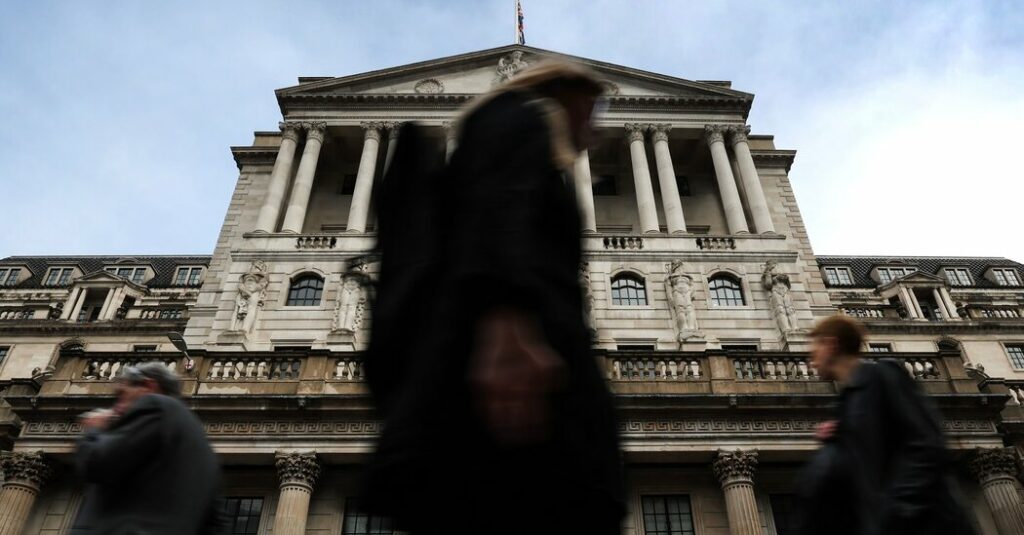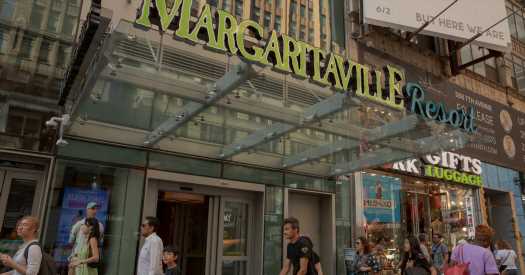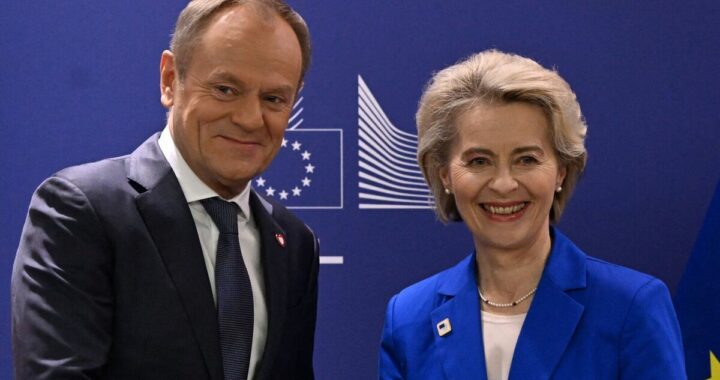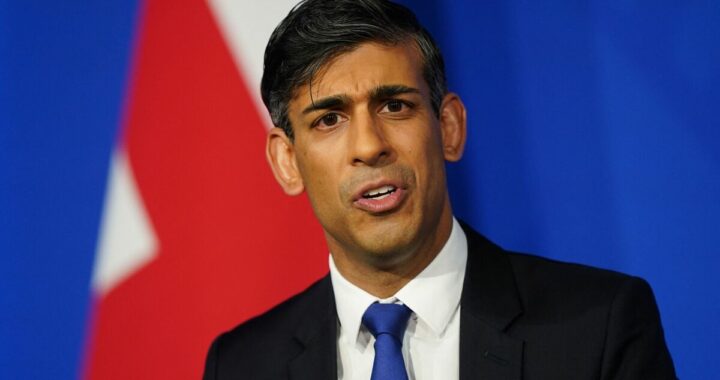The Bank of England Raises Rates for 14th Meeting in a Row
5 min read
Britain’s central bank raised rates to 5.25 percent, the highest since 2008, as it warned that some risks from persistent inflation were “crystallizing.”


By Eshe Nelson
Reporting from London
The Bank of England raised interest rates for a 14th consecutive time on Thursday as it kept up its efforts to banish persistently high inflation from the British economy.
Policymakers lifted rates by a quarter of a percentage point, to 5.25 percent, the highest since early 2008. That was a slower pace of tightening, compared with the previous meeting’s half-point increase, as data recently showed that had inflation eased to its slowest pace in more than a year.
“Inflation is falling and that’s good news,” Andrew Bailey, the governor of the bank, said in a statement on Thursday. But he added that “we need to make absolutely sure that it falls all the way back to the 2 percent target.”
Consumer prices rose 7.9 percent in June from a year before, slackening more than economists had expected. And core inflation, which excludes energy and food prices, providing a closer gauge of domestic price pressures, fell to 6.9 percent from 7.1 percent.
After months of inflation readings coming in higher than the central bank’s forecasts, intensifying concerns about the stubbornness of high prices in Britain, June’s inflation data provided some much needed relief for the central bank, which has been under fire for failing to contain inflation more quickly.
Alongside its policy decision, the central bank published new inflation and economic forecasts. And in those, there was more good news, including for the government: Inflation would fall to just below 5 percent by the end of the year, the bank predicted, which would allow Prime Minister Rishi Sunak to achieve his pledge of halving inflation this year.
But otherwise, the forecasts presented a gloomy outlook of weak economic growth and risks that domestic inflationary pressures were becoming more embedded in the economy. Policymakers said they would make sure interest rates were “sufficiently restrictive for sufficiently long” to push inflation down to their target level.
As interest rates have climbed and inflation has slowed, policymakers around the world are trying to determine the right level of monetary policy tightness. They want to push interest rates high enough to stamp out high inflation, without making economic conditions so restrictive that they push their economies into recessions, high unemployment and deflation.
Last week, the European Central Bank and Federal Reserve both raised interest rates by a quarter of a percentage point. The Fed’s decision came after a pause in rate increases the month before. Christine Lagarde, the president of the E.C.B., which has raised rates nine consecutive times, said at the next meetings policymakers could raise or pause rate increases, and that they had an “open mind.”
Inflation in Britain remains higher than in the rest of Western Europe and more than double the rate in the United States. Specifically, inflation in the services sector and wage growth in the private sector have concerned policymakers: Both measures have been running at annual rates above 7 percent, too high for comfort. This has been was compounded by the tightness in the labor market, where unemployment is relatively low and job openings are plentiful.
Policymakers said that some of the risks of greater persistence in domestic inflationary pressures had “crystallized.”
Six members of the nine-person rate-setting committee, including the newest member, Megan Greene, voted to raise rates by a quarter point, arguing that action was needed to combat the risk of more persistent inflation, even as interest rate increases so far were weighing on the economy.
Catherine Mann and Jonathan Haskel voted for a half-point increase, saying that a larger increase now would reduce the chance of needing “more costly tightening” later. Swati Dhingra voted, as she has in recent meetings, to hold rates steady, arguing that the risk that the bank had done too much was growing, and there would need to be “sharper reversals” in policy later.
“If there were to be evidence of more persistent pressures, then further tightening in monetary policy would be required,” the minutes of the bank’s meeting said.
At the bank’s last meeting, in late June, policymakers unexpectedly raised interest rates by half a percentage point, citing the persistence in inflation after data was surprisingly high, even as they acknowledged the painful impact it would have on people who need to reset the interest rates on their mortgages.
Bank officials said that they expected inflation to continue to fall throughout the rest of the year, to just below the 5 percent, with much of the decline driven by lower household energy bills. Inflation wouldn’t return to the central bank’s 2 percent target until the first half of 2025. This was based on the assumption that the bank’s interest rate would stay above 5 percent through 2025, as implied by trading in financial markets. That said, there was uncertainty around these forecasts, the bank said, and the risk was that inflation would turn out higher than expected, rather than lower.
The bank marginally raised its forecasts for economic growth this year, to half a percent from a quarter point, because low unemployment has served to support household incomes. But the bank said the economy would grow more slowly than previously expected for the next two years as higher interest rates took their toll, weakening business and household investment and weighing on consumer spending.
The Bank of England was the first major central bank to respond to prices that were jumping higher when it raised rates in December 2021. But since then policymakers have come under intense criticism. Some critics have argued that the bank responded too slowly, and then too weakly, to inflation. Now, some worry that policymakers will overcompensate and raise interest rates higher than necessary, causing needless economic pain.
Last week, the central bank announced that Ben Bernanke, the former Federal Reserve chair, would lead a review into the bank’s forecasting, which is used to support monetary policy decision making. Mr. Bernanke led the Fed from 2006 to early 2014, through the financial crisis and the use of unprecedented monetary policy tools, such as quantitative easing.
In a statement, Mr. Bernanke said: “Forecasts are an important tool for central banks to assess the economic outlook. But it is right to review the design and use of forecasts and their role in policymaking, in light of major economic shocks.”
Eshe Nelson is a reporter in London, where she writes about the British and European economies. More about Eshe Nelson
Source: Read Full Article






